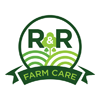LAND SURVEY
The main objective of the survey on Land and Livestock is to generate basic quantitative information on the agrarian structure of the country relevant to land policy. Detailed quantitative information on various aspects of land ownership holdings, operational holdings and ownership of livestock was collected in the survey. The collected information includes area of plots, type of use of plots, leasing pattern, ownership of plots, irrigation facility, type of crop production/farming, number of different types of livestock owned, etc.
SOIL & WATER TESTING
Soil is the prime source of nutrients for crops and it provides support for plant growth in many ways. Soil is a precious natural resource and hence maintenance of soil health is important for sustaining its productivity over long run. Knowledge about soil health and its maintenance is critical to sustaining crop productivity. Due the crop intensification and high yielding varieties grown, it has reported that a net negative balance of 8-10 mt of NPK per annum in India. About 40 to 50 per cent of the foodgrain production in India can be attributed to fertiliser use and the fertiliser consumption in India has increased significantly over years. The escalation in fertiliser prices has severed a setback to the concept of balanced fertilization. Blanket recommendation of fertilisers lead to over or under use of fertilisers ultimately deterioration of soil health. Hence, soil and water testing is essential for sustaining soil health and to improve nutrient use efficiency.
CROP RECOMMENDATION
Agriculture in India plays a major role in economy and employment. The common difficulty present among the Indian farmers are they don’t opt for the proper crop based on their soil necessities. Because of this productivity is affected. This problem of the farmers has been solved through precision agriculture. This method is characterized by a soil database collected from the farm, crop provided by agricultural experts, achievement of parameters such as soil through soil testing lab dataset. The data from soil testing lab given to recommendation system it will use the collect data and do ensemble model with majority voting technique using support vector machine (SVM) and ANN as learners to recommend a crop for site specific parameter with high accuracy and efficiency.
PLANTATION
Plantation is one of the most important constituents of soft landscaping. Trees, shrubs and climbers have been used to enhance the soft natural ambience against harsh elements in most of the enhancement schemes. The planting species are decided based on the physical growth characteristics of trees, like form and shape, foliage pattern, growth rate, branching pattern, soil characteristics and conditions of the strip like water logged areas etc. While selecting the species of trees for landscaping a great care should be taken to choose the species, which already exist along the project corridor.
DRIP IRRIGATION
Drip irrigation, also known as “trickle” irrigation, is one of the methods of water management. Under this system, water is carried to the plant under low pressure, through small diameter plastic pipes and delivered at the root zone, drop by drop through drippers. Drip irrigation is widely practised and established method of irrigation in developed countries and is slowly gaining popularity in India. It is most suited for horticulture crops, vegetables etc. and finds applicability in hard rock areas where groundwater is scarce and helps in optimisation of the limited water resources. The system has its advantages. Its advantages are in terms of savings of water (50-60%) of that required for flow irrigation,effective use of fertilizers, less labour and energy cost.
FENCING
In agriculture, fences are used to keep animals in or out of an area. They can be made from a wide variety of materials, depending on terrain, location and animals to be confined.The fence can make sure they do not leave the farm. On farms that grow produce, fencing can be used to keep out wildlife that may eat or damage the crops.
MANURE APPLICATION
Manures are plant and animal wastes that are used as sources of plant nutrients. They release nutrients after their decomposition. The art of collecting and using wastes from animal, human and vegetable sources for improving crop productivity is as old as agriculture. Manures are the organic materials derived from animal, human and plant residues which contain plant nutrients in complex organic forms. Naturally occurring or synthetic chemicals containing plant nutrients are called fertilizers. Manures with low nutrient, content per unit quantity have longer residual effect besides improving soil physical properties compared to fertilizer with high nutrient content.
PEST & DISEASE MANAGEMENT
Pests and diseases are part of the natural environmental system. In this system there is a balance between predators and pests. This is nature’s way of controlling populations. The creatures that we call pests and the organisms that cause disease only become ‘pest and diseases’ when their activities start to damage crops and affect yields. If the natural environmental system is imbalanced then one population can become dominant because it is not being preyed upon. The aim of natural control is to restore a balance between pest and predator and to keep pests and diseases down to an acceptable level. The aim is not to eradicate them altogether, as they also have a role to play in the natural system. Once a pest or disease has started to attack a crop, the damage cannot be repaired and control becomes increasingly difficult. Where possible, use techniques to avoid or prevent pest and disease attack in the first place.
REGULAR FARM VISIT ON MONTHLY BASIS
We meet Farmers at agreed regular intervals. For annual crops such meetings may be every 1 month during the cropping season. For other farm/forestry management practices the time between each meeting would depend on what specific activities need to be done, or be related to critical periods of the year when there are key issues to observe and discuss in the field.
LANDSCAPING & GARDEN MAINTENANCE
There are many people who think that landscape gardening relates to only gardening in large public parks or palaces of the rich. Landscaping as it is done for larger estates or public parks can also be implemented in a tasteful and artistic way for a small home ground, though on a smaller scale. The term “small” is a misleading ‘one so far as it relates to gardens. The simplest definitive or “small”, as suggested by some authors quite appropriately, is an area which can be effectively managed and maintained physically as well as financially by the owner and his family with occasional hired labour for such hard work as digging, mowing, and shearing of hedges. Here, ways will be suggested for landscaping only small residential houses. For larger estates, a combination of landscaping effects suggested for parks and home landscaping may be followed.
TERRACE GARDEN
On the floor of our house, plants, twines, flower, fruits are cultivated. It might be roof, terrace or balcony. Instead of garden around the house the plants transferred to the floor. No requirements to bought new land, use of existing roof or floor for gardening is appreciable.Roof garden employs a multilayer system, including a grow bags, coir pith, specialised soil medium, soil stabiliser, and a selection of appropriate plant species and varieties that best tolerates the often extreme environmental conditions found in a rooftop setting.
HYDROPONICS
Hydroponic fodder production is a boon for farmers whose soil is rocky and infertile. It is a viable farmer friendly alternative technology for landless farmers for fodder production. Fodders including maize, barley, oats, sorghum, rye, alfalfa and triticale can be produced by hydroponics.

